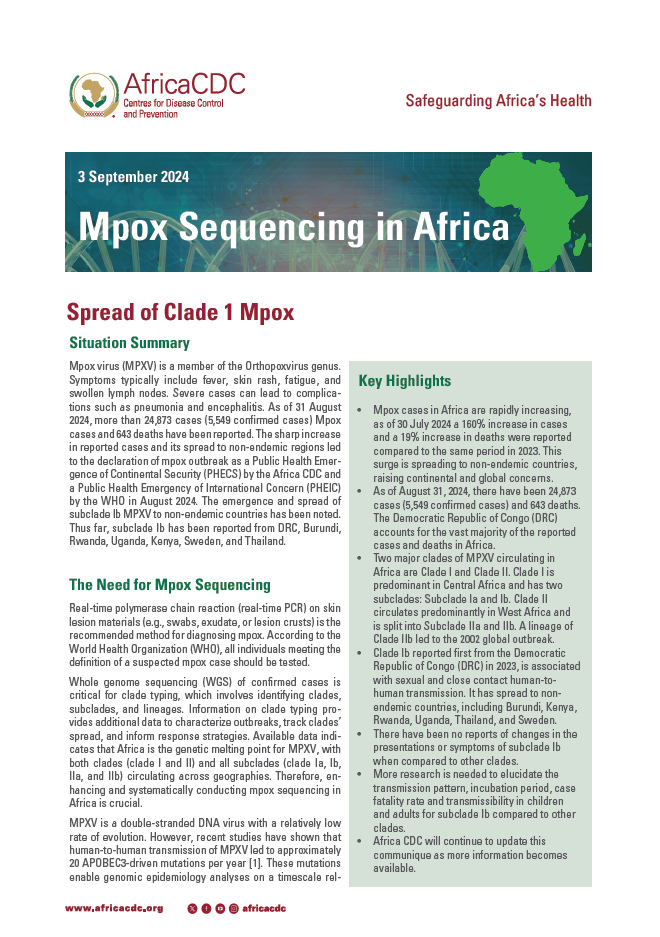Spread of Clade 1 Mpox
Situation Summary
Mpox virus (MPXV) is a member of the Orthopoxvirus genus. Symptoms typically include fever, skin rash, fatigue, and swollen lymph nodes. Severe cases can lead to complications such as pneumonia and encephalitis. As of 31 August 2024, more than 24,873 cases (5,549 confirmed cases) Mpox cases and 643 deaths have been reported. The sharp increase in reported cases and its spread to non-endemic regions led to the declaration of mpox outbreak as a Public Health Emergence of Continental Security (PHECS) by the Africa CDC and a Public Health Emergency of International Concern (PHEIC) by the WHO in August 2024. The emergence and spread of subclade Ib MPXV to non-endemic countries has been noted. Thus far, subclade Ib has been reported from DRC, Burundi, Rwanda, Uganda, Kenya, Sweden, and Thailand.
Key Highlights
• Mpox cases in Africa are rapidly increasing, as of 30 July 2024 a 160% increase in cases and a 19% increase in deaths were reported compared to the same period in 2023. This surge is spreading to non-endemic countries, raising continental and global concerns.
• As of August 31, 2024, there have been 24,873 cases (5,549 confirmed cases) and 643 deaths. The Democratic Republic of Congo (DRC) accounts for the vast majority of the reported cases and deaths in Africa.
• Two major clades of MPXV circulating in Africa are Clade I and Clade II. Clade I is predominant in Central Africa and has two subclades: Subclade Ia and Ib. Clade II
circulates predominantly in West Africa and is split into Subclade IIa and IIb. A lineage of Clade IIb led to the 2002 global outbreak.
• Clade Ib reported first from the Democratic Republic of Congo (DRC) in 2023, is associated with sexual and close contact human-tohuman transmission. It has spread to nonendemic countries, including Burundi, Kenya, Rwanda, Uganda, Thailand, and Sweden.
• There have been no reports of changes in the presentations or symptoms of subclade Ib when compared to other clades.
• More research is needed to elucidate the transmission pattern, incubation period, case fatality rate and transmissibility in children and adults for subclade Ib compared to other clades.
• Africa CDC will continue to update this communique as more information becomes available.
